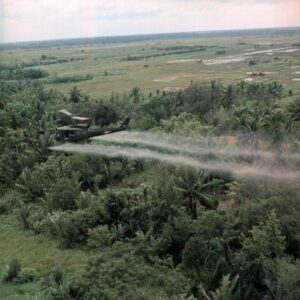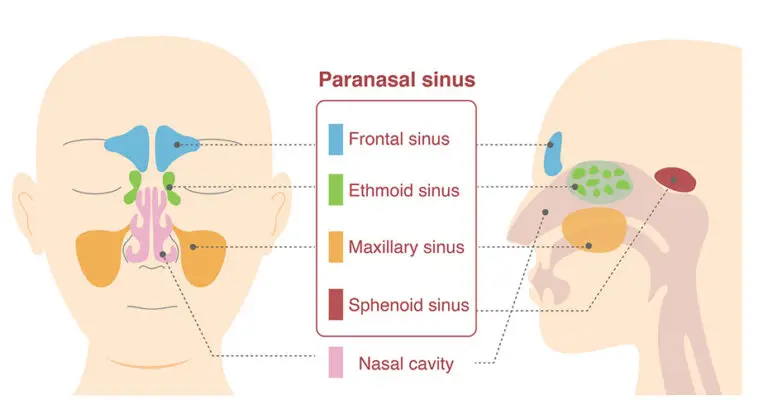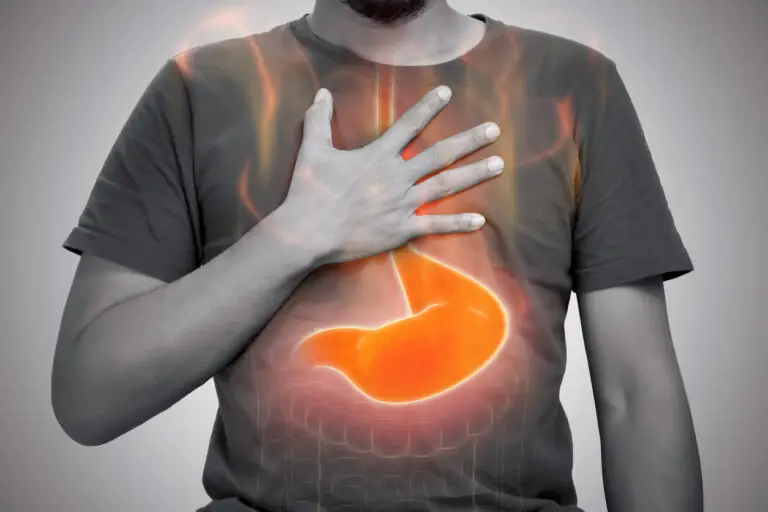President Biden announced his commitment to helping veterans with illnesses resulting from toxic burn pit exposure to receive long-overdue health care and disability compensation. The announcement came on Veteran’s Day and included an eight-point plan to alleviate this public health crisis that many post 9/11 war veterans face.
Toxic exposure to environmental and chemical hazards has been a hot topic in the media for some time now. It has garnered the support of advocates in both Congress and the Senate. They say it’s wrong that veterans can’t get benefits for illnesses presumably due to exposure because they can’t prove service connection.
Although studies about the effects of toxic exposure are happening now more than ever, veterans diagnosed with terminal illnesses are running out of time. These veterans and family members need help now from the country they so faithfully served through 20 years of war on terror, along with Desert Storm in the 90s.
Burn Pits: A Logistical Solution with Deadly Side Effects
Burn pits were a solution to the waste disposal problem created while operating on temporary military installations overseas. A section of the base was designated to burn the waste generated by troops and contractors. All types of waste were burned in these pits: Styrofoam, rubber, munitions, plastics, tires, batteries, and human waste. You can imagine the myriad of toxic chemicals carried throughout the base on the wings of the smoke rising from these burn pits.
At least 1,000 known toxins were contained in that smoke, according to a 2010 Government Accountability Report.
This toxic smoke was a daily part of life for more than 2 million service members who deployed in support of Operation Iraqi Freedom and Operation Enduring Freedom since 2001. Some people had more exposure than others, and many questioned the safety of this common practice.
Gen. Michael Heston, who served three tours in Afghanistan, questioned the relocation of burn pits to an area near troop working and sleeping quarters. He later found out the pits were moved because they were affecting the jet engines on the flight line. How much more damage was the smoke doing to the human lungs that breathed it? Sadly, Heston developed pancreatic cancer at just 58 years old and died in 2018.
What is the VA doing to help burn pit veterans?
There are many stories like Gen. Heston’s of healthy men and women in good shape and no predispositions to disease, being diagnosed with rare cancers and respiratory illnesses of all kinds at a relatively early age. There isn’t a lot of conclusive medical research that links toxic burn pit exposure to long-term health concerns.
And that’s what is needed to get these veterans VA disability compensation and health care.
For a disability claim to get approved, a connection between the illness and military service must be present. The VA uses data provided by the Institute of Medicine for claims decisions, and their research to date on toxic exposure has been scant.
In 2013, under direction from Congress, the VA established the Airborne Hazards and Open Burn Pit Registry, which collects exposure data through voluntary participation from veterans who served on installations with burn pits. More than 255,000 service members have participated in the survey hoping to contribute anecdotal evidence to improve diagnosis and treatment for affected veterans.
In August 2021, the VA established a list of presumptive conditions for burn pit exposure: asthma, rhinitis, and sinusitis. Presumptive conditions are illnesses that the VA accepts are service-connected, in this case, through burn pit smoke. Claims for any of these three conditions are now being approved. Claims denied in the past are being reconsidered. Since August, 6,900 claims have been approved, providing benefits to 4,682 veterans or their survivors. The VA expects 300,000 more claims of this type.
Adding these three conditions is helpful, but it’s not enough. Veterans are suffering from rare respiratory cancers, constrictive bronchiolitis, malignancies, COPD, and more. Symptoms often take years to develop, placing a veteran far beyond the five-year enhanced eligibility period for free VA health care.
Are Burn Pit Veterans Reliving the Plight of Agent Orange Veterans?
 It’s a story reminiscent of our brothers and sisters before us who fought in the Vietnam War who returned with cancers, thyroid problems, and other mystery illnesses. Those service members were subject to a different toxin, Agent Orange, a tactical herbicide that controlled the thick vegetation of the Vietnam jungles.
It’s a story reminiscent of our brothers and sisters before us who fought in the Vietnam War who returned with cancers, thyroid problems, and other mystery illnesses. Those service members were subject to a different toxin, Agent Orange, a tactical herbicide that controlled the thick vegetation of the Vietnam jungles.As warriors returned home, they began to experience effects from exposure, including skin rashes, diabetes, psychological problems, and cancers. Infertility and congenital disabilities were common too. Although public outcry and class action lawsuits persisted for years, it wasn’t until President George H.W. Bush signed the Agent Orange Act in 1991 that the VA recognized some of these illnesses linked to Agent Orange exposure.
In more recent history, veterans who served at an abandoned Soviet airbase in Uzbekistan called Karshi-Khanabad, or K2, are still fighting for recognition of illnesses they are experiencing caused by exposure to toxic soil from demilitarized weapons and other environmental hazards.
We can’t go back and undo the damage that toxic burn pit smoke has done to our warriors, but we certainly can give them the care they deserve now.
The Administration’s Plan to Help
Will help come sooner for burn pit veterans of the Global War on Terror? President Biden intends to make this happen with increased oversight of the VA’s claims process and outreach efforts. Here is a summary of the plan:
Perfect the system used to determine service connection. Expand the VA’s data pool to include information gathered from VA Medical Centers, the Burn Pit Registry, and outside sources instead of only data from the Institute of Medicine.
Add more presumptive conditions. The addition of asthma, rhinitis, and sinusitis is a step in the right direction, but we have much more work to do to identify other diseases that are killing burn pit veterans as we speak.
Review data surrounding rare respiratory cancers and constrictive bronchiolitis. Priority is being given to these two areas of focus because they have been deemed critical. The VA must report back within 90 days their findings along with whether they will classify these as presumptive conditions. After investigating these, use the same model for other suspected illnesses.
Obtain better data from individuals who were exposed. The VA will use the Individual Longitudinal Exposure Record (ILER) to gather data. This program goes into effect in September 2023, but the plan is to accelerate it to get it in place sooner.
Get the word out about military toxic exposures. The VA is beginning an outreach program to inform every veteran and exiting service member about toxic exposure and how to seek help.
Train medical professionals on illnesses related to military toxic exposure. Many medical professionals have no idea what types of hazardous situations service members encounter while in service. Educating VA and non-VA providers on toxic exposure has been contracted to the American College of Preventative Medicine.
Create a network of specialists for patients and providers to get assistance. In 2022, the VA will stand up the VET-HOME program, a network of specialists accessible through a call center that is prepared to answer questions from both veterans and providers regarding burn pit exposures.
Make the enhanced eligibility period longer for VA health care. Many of these illnesses show no symptoms until after the five-year enhanced eligibility period has passed. Make the period longer to cover veterans when symptoms appear.
Where to Help or Get Help
If you are outraged at the fact that our service members who put their lives on hold and on the line to defend our nation are not being taken care of for illnesses they’ve incurred from being placed in harm’s way, you’re not alone. Thousands of people like you are advocating for the benefits that these veterans and family members desperately need.
One such organization is Burn Pits 360, which offers education, outreach, and advocacy for burn pit veterans. Cpt Le Roy Torres and his wife Rosie co-founded the organization. Cpt Torres was stationed at Balad, Iraq, and later diagnosed with constrictive bronchiolitis and toxic brain injury from burn pit exposure. Interestingly, Balad Air Base contained the largest burn pit of the region, with an astounding measurement of 10 acres. Burn Pits 360 has an extensive resources section with studies and burn pit locations.
Another advocate for burn pit victims is IAVA, Iraq, and Afghanistan Veterans of America. Their mission is to improve the lives of post 9/11 veterans. One great feature of their website is the ability to send your support for legislation right to your representatives with a few entries into a form on their site. Check out current legislation in the House and Senate aimed to help Burn Pit Veterans.
Presumptive Benefits for War Fighters Exposed to Burn Pits and other Toxins Act
Lastly, if you are a veteran seeking disability benefits or VA health care in connection with illnesses that you believe result from exposure to toxic burn pit smoke and don’t know where to begin, we can help.
The disability claim process can be complicated and lengthy, especially with conditions that the VA hasn’t yet approved. It is beneficial to have an expert in your corner to guide you through the process, review your medical records, and help you compile evidence and medical opinions to give your claim the weight it needs to be approved.
Our experts at Valor 4 Vet are passionate about helping veterans, and family members access the benefits they deserve. Contact us today to discuss your case with us to start developing a plan that works for you



